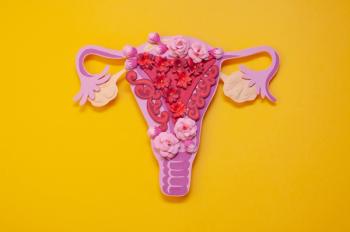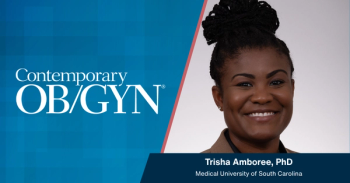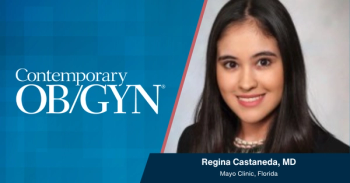
Elective single-embryo transfer: No longer elective
The large body of evidence citing the effectiveness of IVF and recent advances promoting the safety of ART, including the widespread adoption of SET, have established IVF as a reasonable first-line alternative for many infertile couples rather than the treatment of last resort it was once regarded.
With Louise Brown’s 40th birthday looming, in vitro fertilization (IVF) has come of age. Over 3 million IVF babies have been born worldwide and 1.7% of US births are now annually attributable to assisted reproductive technology (ART).1 Since 1980, there have been progressive refinements in the laboratory and clinical aspects producing consistent, incremental improvements in success rates that have only leveled off in the past 10 years.2 Currently, at least 50% of women younger than age 38 can expect to have a successful outcome following a single first treatment cycle including either immediate transfer with fresh embryos or subsequent, delayed transfer with frozen embryos.3 While questions of efficacy have long been resolved, reassurance regarding safety has taken longer. Earlier studies raised concerns regarding a possible increased risk of birth defects in offspring born through use of assisted reproductive technology (ART) or after malignancy in women undergoing ovulation induction, but these risks, if they do exist, are of a very small magnitude. However, there is no debate about ART’s contribution to risk of multiple pregnancy.
In the United States, 20% of IVF pregnancies result in delivery of a multiple pregnancy, accounting for 17% of all twin births and 32% of the total number of higher-order multiples (greater than twins, HOMs).4 Since 1998, there has been significant progress in and focus on reducing incidence of HOMs with adoption of guidelines limiting the number of embryos recommended for transfer but there has been little corresponding progress in reducing incidence of twin pregnancy.5,6 In 2015, only 40% of women younger than age 35 had a single-embryo transfer (SET)3 Recent data from SART show that almost 20% of IVF live births are multiples, with 19% twins and 0.5% HOMs.3 The overall risk of twin pregnancy in the United States is 3%.7ART-derived dizygotic twin pregnancies are associated with increased risk of placenta previa, cesarean delivery, preterm birth, very preterm birth (VPTB), low birth weight (LBW), and a higher risk of congenital malformations, all leading to even greater subsequent morbidity.8 Compared with infants derived from 2 IVF singleton pregnancies, IVF-derived twins have higher rates of respiratory complications, sepsis and jaundice.9 In contrast, risks of adverse perinatal outcome are comparable for SET- and non-ART-derived singletons and lower than for twin pregnancies resulting from embryo transfer of 2 or more embryos.10
Many countries have long recognized the increased risks of multiple gestation and mandated SET for women younger than a specified age, usually 38 or 40. Most countries with legislation proscribing multiple embryo transfer offer substantial financial coverage for ART services and have a vested interest in preventing neonatal complications and reducing costs incurred with prematurity. There has been a longstanding, pervasive international trend towards acceptance of SET as a standard of care but the United States has been slower to adopt.
Several recent advances have facilitated and accelerated widespread adoption of SET. They include:
Improved embryo culture and selection techniques
In recent years, composition of commercial culture media used in the IVF laboratory has evolved, with a range of media and buffers designed to provide optimal support to each stage of the IVF process, from oocyte isolation through fertilization and embryo cleavage out to the blastocyst stage of development. A new generation of incubators is now available with rapid temperature, humidity and CO2/O2 recovery times providing superior culture environments. Evaluation of embryos with time-lapse systems has eliminated the need to remove embryos from the incubator and broader adoption of universal and international grading schemes for embryo evaluation and selection have been cited as contributors to higher pregnancy rates.11,12 Adoption of prenatal genetic screening with the opportunity to select a single euploid embryo for future frozen embryo transfer (FET) has been validated to improve success rates for women older than age 38 and possibly 35 to 38 but not for women younger than age 35, who are believed to produce a preponderance of euploid embryos.13
Advances in embryo cryopreservation
The advent of vitrification as an essential innovation for development of a successful embryo cryopreservation program has allowed programs to cryopreserve embryos without detriment to the overall success rate. Embryo cryopreservation with subsequent FET offers superior results than fresh embryo transfer with higher single and cumulative success rates, even without PGS. It also confers lower risks of complications of placentation including previa, abruption and risk of LBW, VLBW, VPTB, and small for gestational age neonates.14
Economic disincentives to transfer of more than 1 embryo
Historically, the biggest impediment to adoption of SET has been a strong preference on the part of some patients for twin offspring.15 This has largely been a consequence of a desire to complete a family in as short a time as possible, an under-appreciation of the risks of multiple gestation and additional, unintended economic penalties for patients electing SET, if multiple cycles were required to achieve a successful pregnancy. This economic driver has largely been eliminated in countries offering IVF coverage with obligate SET. More recently, insurance companies in the United States are requiring IVF patients to have SET performed using a variety of economic models to incentivize and penalize patients and providers to pursue SET. Several ART centers and their affiliates that provide financing now offer packages structured to eliminate some of the financial disincentives for SET. There is now evidence that patients are more likely to request SET when the financial model is more favorably aligned.
Conclusion
In April 2017, the American Society for Reproductive Medicine (ASRM) and the Society for Assisted Reproductive Technology issued new guidelines calling for SET to be the standard first-line choice for all women younger than age 38.5 If a confirmed euploid embryo is available, SET should be performed up to age 42, the oldest age for which ASRM guidance is offered. The new guidelines were in part prompted by an extensive international experience attesting to the efficacy of SET and SET coupled with chromosomal analysis in older women. Recent studies have confirmed that the cumulative pregnancy rate with serial SET is superior to transferring a comparable number of embryos at one time.16 This realization, along with the additional unanticipated maternal and neonatal advantages cited above, have undermined confidence that transfer with more than 1 embryo confers any meaningful advantage to the patient in an ART program performing optimally. The large body of evidence citing the effectiveness of IVF and recent advances promoting the safety of ART, including the widespread adoption of SET, have established IVF as a reasonable first-line alternative for many infertile couples rather than the treatment of last resort it was once regarded.
REFERENCES
1. Sunderam S, Kissin D, Crawford S, Kulkarni A, Boulet S. Overview of 2015 U.S. assisted reproductive technology (ART) treatment outcomes and contribution of ART and non-art fertility treatments to U.S. multiple births. Fertility and Sterility. 2017; 108(3).
2. Centers for Disease Control and Prevention, American Society for Reproductive Medicine, Society for Assisted Reproductive Technology. 2015 Assisted Reproductive Technology National Summary Report. Atlanta (GA): US Dept of Health and Human Services; 2017.
3. SART Data Release: 2015 Preliminary and 2014. ASRM Press Release and Bulletin 2017; 19 (15).
4. Kulkarni AD, Jamieson DJ, Jones HW, et al. Fertility Treatments and Multiple Births in the United States. New England Journal of Medicine. 2013;369(23):2218-2225.
5. Penzias A, Bendikson K, Butts S, et al. Fertility and Sterility. Fertility and Sterility. Guidance on the limits to the number of embryos to transfer: a committee opinion. 2017;107(4):901-903.
6. Keyhan S, Acharya KS, Acharya CR, et al. How compliant are in vitro fertilization member clinics in following embryo transfer guidelines? An analysis of 59,689 fresh first in vitro fertilization autologous cycles from 2011 to 2012. Fertility and Sterility. 2016;106(3).
7. Martin JA, Hamilton BE, Osterman MJK, et al. Births: Final data for 2015. National vital statistics report; vol 66, no.1. Hyattsville, MD: National Center for Health Statistics. 2017.
8. Qin JB, Wang H, Sheng X, Xie Q, Gao S. Assisted reproductive technology and risk of adverse obstetric outcomes in dichorionic twin pregnancies: a systematic review and meta-analysis. Fertility and Sterility. 2016; 105(5):1180-1192.
9. Sazonova A, Källen K, Thurin-Kjellberg A, Wennerholm U-B, Bergh C. Neonatal and maternal outcomes comparing women undergoing two in vitro fertilization (IVF) singleton pregnancies and women undergoing one IVF twin pregnancy. Fertility and Sterility. 2013;99(3):731-737.
10. Martin AS, Chang J, Zhang Y, et al. Perinatal outcomes among singletons after assisted reproductive technology with single-embryo or double-embryo transfer versus no assisted reproductive technology. Fertility and Sterility. 2017; 107(4):954-960.
11. Balaban B, Brison D, Calderon G, et al. The Istanbul consensus workshop on embryo assessment: proceedings of an expert meeting. Human Reproduction. 2011;26(6):1270-1283.
12. Meseguer M, Rubio I, Cruz M, Basile N, Marcos J, Requena A. Embryo incubation and selection in a time-lapse monitoring system improves pregnancy outcome compared with a standard incubator: a retrospective cohort study. Fertility and Sterility. 2012; 98(6).
13. Forman EJ, Upham KM, Cheng M, et al. Comprehensive chromosome screening alters traditional morphology-based embryo selection: a prospective study of 100 consecutive cycles of planned fresh euploid blastocyst transfer. Fertility and Sterility. 2013; 100(3):718-724.
14. Maheshwari A, Pandey S, Shetty A, Hamilton M, Bhattacharya S. Obstetric and perinatal outcomes in singleton pregnancies resulting from the transfer of frozen thawed versus fresh embryos generated through in vitro fertilization treatment: a systematic review and meta-analysis. Fertility and Sterility. 2012; 98(2).
15. Stillman RJ, Richter KS, Banks NK, Graham JR. Elective single embryo transfer: A 6-year progressive implementation of 784 single blastocyst transfers and the influence of payment method on patient choice. Fertility and Sterility. 2009; 92(6):1895-1906.
16. Mancuso AC, Boulet SL, Duran E, Munch E, Kissin DM, Voorhis BJV. Elective single embryo transfer in women less than age 38 years reduces multiple birth rates, but not live birth rates, in United States fertility clinics. Fertility and Sterility. 2016; 106(5):1107-1114.
Newsletter
Get the latest clinical updates, case studies, and expert commentary in obstetric and gynecologic care. Sign up now to stay informed.




















